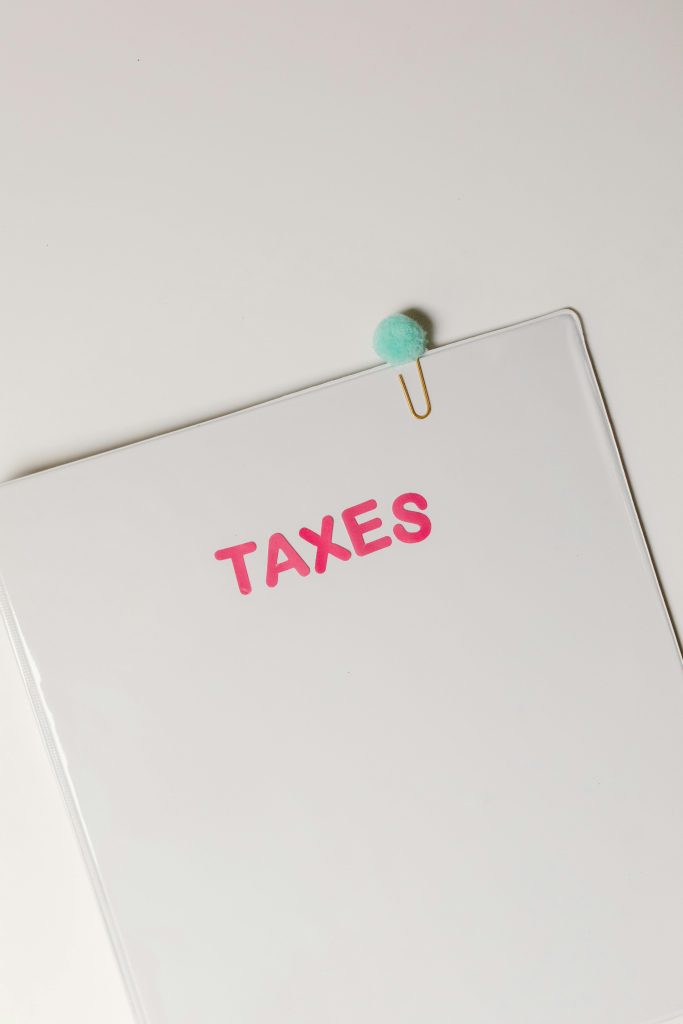Remember that feeling of looking at your bank account a few days before payday? That slight pit in your stomach, the mental math that happens at the grocery store, the quiet hope that no surprise expense rears its ugly head? You’re not alone. For most of us, our relationship with money is… complicated. It’s a source of stress, a tool for fun, and a complete mystery, all wrapped into one.
But what if it didn’t have to be?
What if you could replace that anxiety with a feeling of quiet confidence? What if you could see a surprise bill and think, “Okay, annoying, but I’ve got this,” instead of, “Oh no, how am I going to pay for that?”
This isn’t about becoming a Wall Street wolf or a coupon-clipping extreme frugalist. This is about understanding the flow of your money so you can tell it where to go, instead of wondering where it went. This is about building a life where your money supports your dreams, not dictates your days.
Welcome to Financial Management 101. No jargon, no judgment, just a step-by-step map to get you from “constantly stressed” to “comfortably in control.” Let’s dive in.
Part 1: The Foundation – It All Starts With Knowing
Before you can run, you have to walk. Before you can invest, buy a house, or take that dream vacation, you need to understand the very basics of your own financial life. This part might feel a little tedious, but trust me, it’s the most important part of the entire process. This is where you build your financial house on solid rock, not sand.
1. Track Your Money: The “Where Does It All Go?” Experiment

You can’t manage what you don’t measure. The single most powerful thing you can do for your finances right now is to start tracking them. I’m not talking about a strict, soul-crushing budget (yet). I’m talking about a simple, no-shame experiment.
For one full month, I want you to track every single dollar you spend.
Yes, every single one. That morning coffee, the $3.99 streaming subscription, the impulse buy at the checkout line, the Friday night pizza, everything.
How to do it: Use whatever method is easiest for you.
- Your Phone’s Notes App: Quick and always with you.
- A Notes Doc on Your Computer: Easy to organize.
- A Small Notebook: Old school, but effective.
- A Budgeting App: Like Mint, YNAB (You Need A Budget), or PocketGuard. These can link to your accounts and automate a lot of the tracking.
At the end of the month, categorize your spending. Don’t get too fancy. Start with big buckets like:
- Housing (Rent/Mortgage, Utilities)
- Food (Groceries + Eating Out)
- Transportation (Gas, Car Payment, Bus Fare)
- Lifestyle (Shopping, Entertainment, Subscriptions)
- Debts (Credit Card Payments, Student Loans)
- Other (Everything else)
The goal here is not to judge yourself. The goal is to see the truth. You will likely have a few “oh wow” moments. “I spend how much on takeout?” or “My subscriptions add up to that?!” This isn’t about guilt; it’s about awareness. Awareness is the first step to power.
2. Create a Budget That Doesn’t Suck (The 50/30/20 Rule)

The word “budget” has a bad reputation. It sounds restrictive, like a financial diet. But a budget isn’t a cage; it’s a plan. It’s your permission slip to spend money on the things you love, without guilt, because you’ve already accounted for your future needs.
For beginners, I highly recommend the 50/30/20 rule. It’s simple, flexible, and incredibly effective.
Here’s how it breaks down:
- 50% – Needs: This is for your essential, must-pay expenses. This includes your rent/mortgage, utilities (electric, water, gas, internet), groceries, transportation to work, and minimum debt payments. If you don’t pay these, bad things happen.
- 30% – Wants: This is the fun stuff! This is for dining out, movies, hobbies, shopping, travel, streaming services, and that fancy coffee. This category is what makes life enjoyable.
- 20% – Savings & Debt Repayment: This is your future-you fund. This money goes towards your emergency fund (we’ll talk about this next), retirement savings, and any extra payments on high-interest debt (like credit cards) beyond the minimum.
How to make it work:
- Calculate your monthly take-home pay (that’s your salary after taxes).
- Multiply that number by 0.50 (for Needs), 0.30 (for Wants), and 0.20 (for Savings/Debt).
- Do your best to fit your spending into these buckets.
Example: If you bring home $3,000 a month after taxes:
- Needs: $3,000 x 0.50 = $1,500
- Wants: $3,000 x 0.30 = $900
- Savings/Debt: $3,000 x 0.20 = $600
Is it always perfect? No. Some months your “Needs” might creep up to 55%. That’s okay! The point is to have a target to aim for. It creates a framework that automatically prioritizes your future without making your present miserable.
3. Build Your Financial Safety Net: The Emergency Fund

This is, without a doubt, the cornerstone of financial peace of mind. An emergency fund is a stash of money set aside to cover unexpected, necessary expenses.
What counts as an emergency?
- Your car breaks down.
- You have a sudden medical bill.
- You lose your job.
- Your pet needs an urgent vet visit.
- A critical home repair (like a leaking roof or a broken furnace).
What is NOT an emergency?
- A holiday sale.
- A spontaneous weekend trip.
- The latest smartphone release.
Your emergency fund is your buffer between life’s little (and big) surprises and financial disaster. It stops you from reaching for a high-interest credit card every time something goes wrong.
How to build it:
- Start Small. Your initial goal is $500 or $1,000. This is your “starter” emergency fund. It will cover most small-to-medium surprises.
- Fund It. Use that 20% from your 50/30/20 budget. Set up an automatic transfer from your checking account to a separate savings account right after you get paid. If you don’t see it, you won’t miss it.
- The Ultimate Goal. Once you have your starter fund, aim for a full emergency fund of 3 to 6 months’ worth of your essential living expenses (that 50% “Needs” category). This is your “holy-crap-I-lost-my-job” fund. It might take a year or two to build—that’s perfectly fine.
Where to keep it: This money needs to be safe and accessible. Don’t invest it in the stock market. A simple high-yield savings account at an online bank is perfect. It’s separate from your daily spending account, earns a little interest, and you can transfer it in a day or two if you need it.
Part 2: Leveling Up – Tackling Debt and Growing Your Wealth

Once you have your foundation—tracking your spending, a simple budget, and a starter emergency fund—you’re ready to level up. This is where you go from being stable to being powerful.
4. Taming the Beast: A Strategy for Debt
Debt, especially high-interest credit card debt, is like an anchor tied to your financial future. Every dollar you pay in interest is a dollar that isn’t working for you. Tackling it should be a top priority.
First, make a list of all your debts (excluding your mortgage for now). For each one, write down:
- The creditor (e.g., Visa, Student Loan Company)
- The total balance you owe
- The minimum monthly payment
- The interest rate (this is key!)
Now, you have two popular strategies to choose from: the Debt Snowball and the Debt Avalanche.
The Debt Snowball (The Psychological Win)
- List your debts from the smallest balance to the largest balance.
- Make minimum payments on all your debts except the smallest one.
- Throw every extra dollar you can from your budget at that smallest debt until it’s gone.
- Once the smallest debt is paid off, take the money you were putting toward it (including its minimum payment) and now attack the next smallest debt on your list.
Why it works: The Debt Snowball gives you quick wins. Paying off an entire debt, even a small one, gives you a massive psychological boost and keeps you motivated to keep going.
The Debt Avalanche (The Mathematical Win)
- List your debts from the highest interest rate to the lowest interest rate.
- Make minimum payments on all your debts except the one with the highest interest rate.
- Throw every extra dollar you can at that high-interest debt until it’s gone.
- Once it’s gone, move to the debt with the next highest interest rate.
Why it works: The Debt Avalanche saves you the most money on interest over time. You’re strategically taking down your most expensive debts first.
Which one should you choose?
If you are motivated by quick results and need to see progress to stay on track, choose the Debt Snowball.
If you are very disciplined and want to optimize for the lowest total cost, choose the Debt Avalanche.
There is no wrong answer. The best method is the one you will stick with.
5. Saving for Your Future Self: An Introduction to Investing
The word “investing” can sound intimidating. It conjures images of men in suits yelling on the floor of the stock exchange. Let’s reframe that.
Investing is simply making your money work for you, so that one day, you don’t have to work for your money.
When you leave money in a regular savings account, its growth is tiny—it often doesn’t even keep up with inflation (the rising cost of things over time). Investing allows your money to grow at a much faster rate through the power of compound interest.
Compound Interest: The 8th Wonder of the World
Albert Einstein supposedly called it this, and for good reason. It’s when the interest you earn starts earning interest itself. It’s a snowball effect.
- Simple Example: You invest $1,000 and it earns 7% in a year. You now have $1,070. The next year, you earn 7% on the entire $1,070, not just your original $1,000. That means you earn $74.90, so you now have $1,144.90. It seems small at first, but over 20, 30, or 40 years, this growth becomes explosive.
How to Start Investing as a Beginner:
- Use Your Employer’s Retirement Plan (The 401(k)): If your job offers a 401(k) (or a 403(b) for non-profits), this is the absolute easiest place to start.
- They often match contributions. This is free money! If your employer says they will match 50% of your contributions up to 6% of your salary, that means if you put in 6%, they add an extra 3%. You just got an instant 50% return on your investment. Not taking advantage of a match is like saying no to a pay raise.
- It’s automatic. The money comes out of your paycheck before you even see it.
- Start small. Even 1% is a start. Aim to increase it by 1% every year until you’re contributing at least enough to get the full company match.
- Open an IRA (Individual Retirement Account): If you don’t have a 401(k), or you want to save even more, an IRA is your next best bet. It’s a retirement account you open yourself.
- Two main types: Roth IRA (you pay taxes now, and all the growth is tax-free when you retire) and Traditional IRA (you get a tax break now, and you pay taxes when you withdraw in retirement). For most young people just starting out, a Roth IRA is a fantastic choice.
- You can open one easily with an online broker like Vanguard, Fidelity, or Charles Schwab.
- What to Actually Invest In? Keep It Simple!
You don’t need to pick individual stocks. In fact, you shouldn’t, especially as a beginner. The best, simplest, and most recommended strategy is to invest in low-cost index funds or ETFs (Exchange-Traded Funds).- What are they? Imagine a fund that automatically buys a tiny piece of every company in the entire U.S. stock market (like the S&P 500). When you buy one share of that fund, you instantly own a small piece of 500 different companies. This is diversification, and it’s your best friend. It spreads out your risk. If one company has a bad year, it doesn’t sink your entire ship.
- What to buy? A simple target-date fund (like a “Vanguard Target Retirement 2060 Fund”) is a set-it-and-forget-it option. Or, you can just buy one broad market index fund like the “Vanguard Total Stock Market ETF (VTI)” or the “SPDR S&P 500 ETF (SPY).”
The key is to start early and be consistent. Time in the market is more important than timing the market.
Part 3: The Mindset and The Habits – Making It Stick

Financial management isn’t a one-time project; it’s a lifelong skill. The technical stuff is only half the battle. The other half is your mindset and the daily habits you build.
6. Protect Yourself: The Unsexy Side of Finance
Building wealth is one thing; protecting it is another. A few key protections can save you from financial ruin.
- Insurance: This is your first line of defense.
- Health Insurance: Non-negotiable. A major medical event is the number one cause of bankruptcy in many countries.
- Renter’s Insurance: If you rent, get this. It’s incredibly cheap (often $15-$20 a month) and protects your belongings from theft or damage.
- Auto Insurance: Legally required in most places, but don’t just get the minimum. Make sure you have good liability coverage.
- Your Credit Score: Your Financial Report Card
Your credit score is a number that tells lenders how risky it is to lend you money. A good score (generally 670 and above) gets you lower interest rates on cars, houses, and credit cards, saving you tens of thousands of dollars over your lifetime.- How to build good credit:
- Pay all your bills on time, every time. This is the most important factor.
- Keep your credit card balances low. Using less than 30% of your total available credit limit is ideal.
- Don’t open too many new accounts at once.
- Check your credit report for free at AnnualCreditReport.com to make sure there are no errors.
- How to build good credit:
7. The Power of “Why”: Setting Financial Goals
Saving money for the sake of saving money is boring. Saving money for a specific, exciting goal is powerful.
Take some time to dream. What do you want your money to do for you?
- Short-Term Goals (1-3 years): A new laptop, a vacation, a down payment for a car.
- Mid-Term Goals (3-10 years): A down payment on a house, starting a business, getting married.
- Long-Term Goals (10+ years): Retirement, paying for your kids’ college, financial independence.
Write these goals down. Be specific. Instead of “save for a vacation,” write “Save $2,500 for a trip to Japan in October 2025.” Now, your budget has a purpose. That $100 you’re putting away each month isn’t just disappearing; it’s buying you a future memory. This connection between today’s sacrifice and tomorrow’s reward is what makes financial discipline feel empowering, not depriving.
8. Staying Motivated and Avoiding Burnout
You will have bad months. You’ll overspend. An unexpected expense will wipe out some of your progress. This is normal. This is life. The key is to not let a setback become a surrender.
- Celebrate Your Wins: Paid off a credit card? Transfer your first $100 to your emergency fund? Celebrate it! Do a little dance, treat yourself to a nice dinner (within your “Wants” budget), and tell a supportive friend. Acknowledging your progress is crucial.
- Make It a Game: Challenge yourself to a “no-spend weekend.” See how low you can keep your grocery bill by meal prepping. Find fun, free hobbies.
- Find a Money Buddy: Talk to a trusted friend or partner about your goals. Having someone to be accountable to can make a world of difference.
- Review and Adjust: Your budget is not set in stone. Your life will change, and your budget should change with it. Sit down every few months for a “money date” with yourself to see how you’re doing and adjust your plan.
Your Journey Starts Now

Look, nobody is born knowing how to manage money. We weren’t taught this in school. We’re all just figuring it out as we go. The fact that you’ve read this far means you’re already ahead of the curve.
You don’t need to implement everything in this article all at once. That’s a surefire way to get overwhelmed and quit.
Here is your action plan for the next month:
- This Week: Open a notes app or get a notebook. Commit to tracking every single dollar you spend for the next 30 days. That’s it. Just observe.
- Next Month: After your 30-day tracking period, sit down for one hour. Add up your spending into the categories we discussed. Then, calculate your take-home pay and set up your 50/30/20 budget. It will be a rough draft, and that’s okay.
- The Month After: Open a high-yield savings account at an online bank. Set up an automatic transfer of $50 (or whatever you can manage) from your checking account to this new savings account. This is the start of your emergency fund.
One step at a time. One habit at a time.
Financial freedom isn’t about being rich. It’s about having choices. It’s about security. It’s about the profound peace that comes from knowing you are the one in charge of your financial destiny. You’ve got this.
Now, go tell your money who’s boss.






